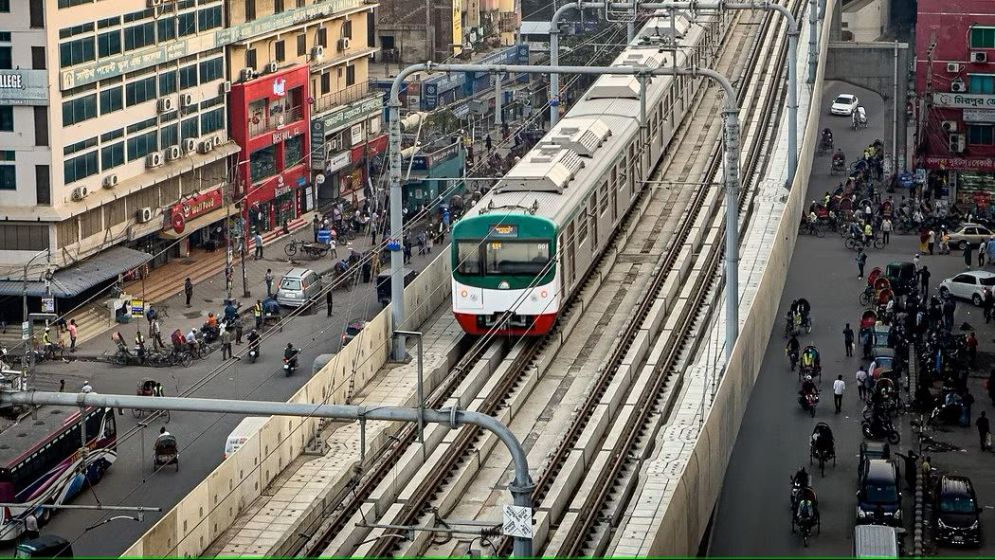
Recently, the Central
Crime Branch sleuths raided six places in Bengaluru and identified 25 illegal
Bangladeshi immigrants who had allegedly paid between Rs 30,000 to Rs 50,000 to
middlemen to illegally cross the border into India. Having crossed the border,
they travelled by bus and train and eventually reached Bengaluru to find work
as labourers and rag-pickers, residing in shanties around the city.
As per the
International Monetary Fund (IMF), Bangladesh is ahead of India for four years
at a stretch in terms of per capita GDP, calculated by dividing the cumulative
amount of production and services created within a country by the population of
the country. The latest World Bank data shows Bangladesh’s per capita GDP is
$2,688 compared to India’s $2,411. Not just that, the life expectancy of a
Bangladeshi citizen at birth is 74 years compared to 68 years for an Indian.
If an average
Bangladeshi citizen is earning more than their Indian counterpart, what
explains this illegal economic migration? An indicator of a more equitable
income distribution and higher overall productivity, the per capita income does
make the country more attractive to foreign investors, no doubt correlating
with lower poverty rates. According to the World Bank’s country overview
for Bangladesh, ‘A robust demographic dividend, strong exports of ready-made
clothing, resilient remittance inflows, and stable macroeconomic conditions
have supported rapid economic growth over the past two decades.’
In Bangladesh recently
on a short visit, I was surprised to see the spanking new Dhaka Elevated
Expressway, an elevated toll road from the airport that takes you to Dhaka’s
upscale residential and commercial neighbourhoods in the shortest possible
time. A city that normally confronts you with a surprising mix of modernity and
underdevelopment, Dhaka now sports a dynamic urban landscape with urban
renewal projects, the most prominent of which is the Dhaka Metro project.
A potential
game-changer, the Dhaka Metro is transforming the transportation landscape,
shaping Dhaka’s future urban development, addressing its severe traffic
congestion, and improving public transportation. Undoubtedly, Bangladesh is on
the highway of development with other big infrastructure projects on the anvil,
coal-based power plants in the coastal areas, a nuclear power plant in
partnership with Russia, and LNG projects with the US, all being fast-tracked.
So, given the above
data, why is there economic migration from Bangladesh to India when it should
be the other way around? The reality is far different from the macro numbers.
Bangladesh’s financial growth isn’t translating into improved living standards
for the majority of its people. The official image of growth is masking a
brewing financial storm. An illusion of economic progress is burdening ordinary
citizens with increasing prices of food and other essential items. Massive
expenditure on large-scale infrastructure projects is showing a high GDP, but
is negatively impacting people’s quality of life as the social and
environmental costs of such projects are not considered, giving an inaccurate
picture of Bangladesh’s economic health.
While Bangladesh does
have a higher per capita income, it is not translating into job opportunities.
Despite the higher overall per capita income, income inequality within the
country continues. Bangladeshis, living in rural and underdeveloped areas experience
high levels of poverty and lack of economic opportunities driving them to seek
better prospects in India’s large and diverse economy with sectors like
pharmaceuticals and the service industry offering them lucrative employment
opportunities.
Bangladesh’s economy,
by comparison, is largely reliant on the textile sector. Again, India provides
better access to public services, such as healthcare and education. The higher
per capita income in Bangladesh is not able to negate the various factors that
drive its citizens to leave the country in search of better economic prospects.
Maybe it is India’s
compelling growth story that is attracting economic migrants in droves. Despite
a pressing need to expedite labour law changes, oversee tax reforms, boost the
ease of doing business, address regional imbalances, and promote development in
lagging states to achieve economic growth, India’s growth averaging 7% makes us
the fastest-growing large economy in the world. Yet we are still a poor country
— with a per capita income ranking 136 globally, we are the poorest among
BRICS, the poorest in G20 — and badly need to introspect and make policy
adjustments to foster equitable and sustainable economic growth.
(The writer is former Executive Director and Member, Board of Directors, BEML)
This article was originally
published at the Deccan Herald
and is republished under the Creative Commons license.
